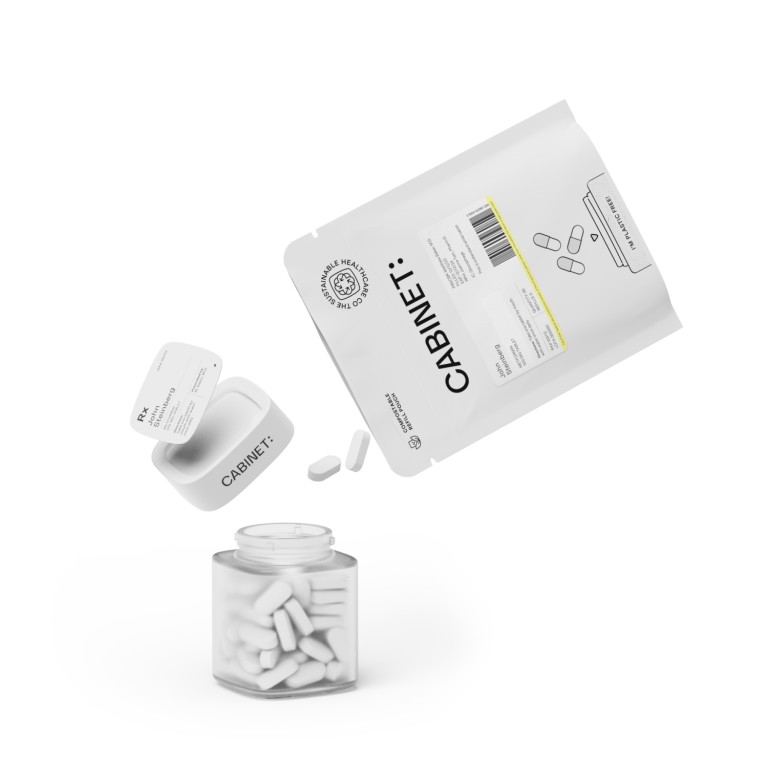Sertraline, also known by its brand name Zoloft, is a commonly prescribed medication that belongs to a class of drugs called selective serotonin reuptake inhibitors (SSRIs). It is primarily used to treat depression, obsessive-compulsive disorder (OCD), panic disorder, post-traumatic stress disorder (PTSD), and social anxiety disorder. Understanding the uses and benefits of sertraline can help you maximize its effectiveness and manage potential side effects. In this article, we will delve into the dosage guidelines and management tips for sertraline, providing you with the knowledge to get the most out of this medication.
Understanding Sertraline: Its Uses and Benefits
Sertraline is a powerful tool in the treatment of various mental health conditions. It functions by increasing the levels of serotonin, a neurotransmitter that plays a crucial role in regulating mood, in the brain. By doing so, sertraline helps alleviate symptoms of depression, anxiety, and other disorders.
Individuals prescribed sertraline often experience improvements in their overall well-being and quality of life. This medication is known for its effectiveness in managing symptoms of panic disorder, obsessive-compulsive disorder, post-traumatic stress disorder, and social anxiety disorder. Sertraline's versatility in treating a wide range of mental health conditions makes it a valuable option for many patients seeking relief.
What is Sertraline?
Sertraline is an FDA-approved medication that can significantly improve the quality of life for individuals struggling with mental health issues. It is available in both tablet and liquid form, allowing for flexible dosage options based on the severity of the condition and individual needs.
When starting sertraline treatment, healthcare providers typically begin with a low dose that is gradually increased to achieve the desired therapeutic effect. This personalized approach helps minimize potential side effects and ensures that patients receive the optimal benefits of the medication. Regular monitoring and adjustments to the dosage may be necessary to maintain effectiveness and address any emerging symptoms.
How Does Sertraline Work?
The exact mechanism of action for sertraline is not fully understood, but it is believed to work by blocking the reuptake of serotonin in the brain. This increases the availability of serotonin and enhances the communication between neurons, ultimately improving mood and reducing symptoms of depression and anxiety.
By modulating serotonin levels, sertraline helps restore balance to the brain chemistry of individuals with mental health disorders. This pharmacological intervention can lead to significant improvements in mood, energy levels, and overall functioning. Sertraline's impact on neurotransmitter activity underscores its importance in the treatment of various psychological conditions, offering hope and relief to those in need.
Dosage Guidelines for Sertraline
When starting sertraline, it is essential to follow the dosage guidelines provided by your healthcare provider. The optimal dosage can vary depending on the condition being treated and individual factors, such as age and overall health. Starting with a lower dose and gradually increasing it minimizes the risk of potential side effects.
Sertraline, a selective serotonin reuptake inhibitor (SSRI), is commonly prescribed to treat a variety of mental health conditions. It works by restoring the balance of serotonin, a neurotransmitter in the brain that helps regulate mood. The effectiveness of sertraline is highly dependent on finding the right dosage that works for each individual.
Starting Dosage for Different Conditions
The initial dose of sertraline for depression in adults is typically 50 mg once daily. For OCD, panic disorder, PTSD, and social anxiety disorder, the recommended starting dose is often lower, usually around 25 mg per day. These starting doses can be adjusted over time to achieve the desired therapeutic effect.
For children and adolescents, the starting dose of sertraline is usually lower than that for adults and is determined based on their weight and medical history. It is crucial for pediatric patients to be closely monitored by a healthcare provider when initiating sertraline therapy.
Adjusting Your Sertraline Dosage
Individuals respond differently to medications, and consequently, the dose that works for one person may not be suitable for another. Your healthcare provider will closely monitor your response to sertraline and make dosage adjustments if necessary. It is essential to communicate any changes in symptoms or side effects to your doctor to ensure optimal treatment outcomes.
Factors such as drug interactions, liver or kidney function, and genetic variations can also influence how your body processes sertraline. Your healthcare provider will consider these factors when determining the most appropriate dosage for you. It is important to follow your provider's instructions carefully and not adjust your sertraline dosage without consulting them first.
Managing Side Effects of Sertraline
Like any medication, sertraline can cause side effects. However, many individuals tolerate it well, and the benefits often outweigh the potential risks. By being aware of the common side effects and knowing how to handle them, you can effectively manage any undesirable symptoms that may arise.
Sertraline, a selective serotonin reuptake inhibitor (SSRI), is commonly prescribed to treat depression, anxiety disorders, and other mental health conditions. It works by increasing the levels of serotonin in the brain, which can help improve mood, sleep, appetite, and energy levels. It is important to take sertraline exactly as prescribed by your healthcare provider to maximize its benefits and minimize the risk of side effects.
Common Side Effects and How to Handle Them
Common side effects of sertraline include nausea, diarrhea, dry mouth, drowsiness, and sexual dysfunction. These side effects are generally temporary and tend to subside as your body adjusts to the medication. It is recommended to take sertraline with food to help reduce gastrointestinal discomfort. Staying hydrated and practicing good oral hygiene can also alleviate dry mouth. If you experience persistent or severe side effects, it is important to consult your healthcare provider for further guidance. They may suggest adjusting the dosage or exploring alternative treatment options.
Additionally, incorporating regular exercise, maintaining a healthy diet, and practicing stress-reducing activities such as yoga or meditation can complement the effects of sertraline and promote overall well-being.
When to Seek Medical Attention
While most side effects of sertraline are relatively mild, there are rare cases where more serious adverse reactions can occur. If you experience symptoms such as suicidal thoughts, severe allergic reactions, or unusual bleeding or bruising, it is crucial to seek immediate medical attention. Your healthcare provider can evaluate your condition and determine the best course of action.
Interactions to Be Aware Of
When taking any medication, it is important to be mindful of potential interactions to ensure your safety and the effectiveness of the treatment. Sertraline, a commonly prescribed antidepressant, belongs to a class of drugs known as selective serotonin reuptake inhibitors (SSRIs). It is used to treat a variety of mental health conditions, including depression, anxiety disorders, and obsessive-compulsive disorder.
Understanding the interactions of sertraline with other substances is crucial for optimizing its therapeutic benefits and minimizing potential risks. In addition to drug interactions, certain food and lifestyle factors can also impact the effectiveness of sertraline and pose risks to your well-being.
Drug Interactions with Sertraline
Several medications have the potential to interact with sertraline, leading to adverse effects or reducing its efficacy. Monoamine oxidase inhibitors (MAOIs), a type of antidepressant, should not be taken with sertraline due to the risk of serotonin syndrome. This serious condition can cause symptoms such as agitation, hallucinations, seizures, and even coma. Blood thinners like warfarin and certain antipsychotic medications may also interact with sertraline, necessitating close monitoring by healthcare providers to prevent harmful consequences.
It is essential to inform your doctor about all the medications you are taking, including over-the-counter drugs, supplements, and herbal remedies, to avoid potentially dangerous interactions with sertraline.
Food and Lifestyle Interactions
While medications are commonly known to interact with each other, it is less recognized that food and lifestyle choices can also influence drug metabolism and effectiveness. Grapefruit and its juice contain compounds that can inhibit the enzyme responsible for breaking down sertraline in the body. Consuming grapefruit while taking sertraline may result in higher drug concentrations in the bloodstream, increasing the risk of side effects such as dizziness, drowsiness, and nausea.
In addition to grapefruit, alcohol consumption can also impact the effects of sertraline. Alcohol is a central nervous system depressant and may exacerbate the sedative effects of sertraline, leading to impaired coordination and cognitive function. It is advisable to limit or avoid alcohol while on sertraline therapy to ensure the medication's optimal performance.
Tips for Taking Sertraline Effectively
To maximize the benefits of sertraline and ensure its optimal effectiveness, it is essential to follow a few key guidelines.
When starting sertraline, it is common for healthcare providers to begin with a lower dose and gradually increase it to the therapeutic level. This approach helps minimize potential side effects and allows your body to adjust to the medication. It is important to be patient during this titration process and communicate any concerns or unusual symptoms to your healthcare provider.
Best Time to Take Sertraline
Most individuals take sertraline once daily, either in the morning or evening. Taking it at the same time each day helps maintain a consistent level of medication in the bloodstream, enhancing its efficacy. It is important to follow your healthcare provider's instructions regarding the specific timing of your dosage.
Some individuals may experience mild gastrointestinal discomfort when taking sertraline on an empty stomach. If this is the case for you, consider taking the medication with a light snack or a meal to help alleviate any digestive issues.
What to Do If You Miss a Dose
If you accidentally miss a dose of sertraline, it is generally advised to take it as soon as you remember. However, if it is close to the time for your next scheduled dose, it is better to skip the missed dose and continue with your regular dosing schedule. Taking a double dose to make up for a missed one is not recommended.
Remember that sertraline may take several weeks to start exerting its full therapeutic effects. It is important to continue taking the medication as prescribed, even if you do not notice immediate improvements in your symptoms. Abruptly stopping sertraline can lead to withdrawal symptoms, so it is crucial to work closely with your healthcare provider if you are considering discontinuing the medication.
In conclusion, understanding how to properly use and manage sertraline is crucial for achieving the desired therapeutic effects while minimizing potential side effects. Adhering to the dosage guidelines, managing common side effects, being aware of interactions, and following tips for effective usage will help you get the most out of this medication. Remember to consult your healthcare provider for personalized guidance and support throughout your treatment journey.
Are you already benefiting from sertraline and looking to enhance your prescription experience? Cabinet® Health invites you to see if your sertraline refill qualifies for a switch to Cabinet® Pharmacy. Look Up Your Prescription now and discover the perks of transferring, including a free personalized glass bottle that replaces the standard orange plastic, a chic medicine travel tin, and a complimentary bottle of premium Acetaminophen. Experience the convenience of rapid pharmacy transfer, with refills managed for you, and more. Our dedicated pharmacists will ensure a seamless transition, and you'll enjoy the ease of first-order giveaways and seamless home shipping. Our shatter-tested, child-safe, and refillable glass bottles are personalized with your name and prescription information, designed to declutter your space. Plus, your refills will arrive in eco-friendly pouches, perfect for home composting. It only takes a minute to sign up, so let Cabinet® Health take care of the details while you focus on your health.










